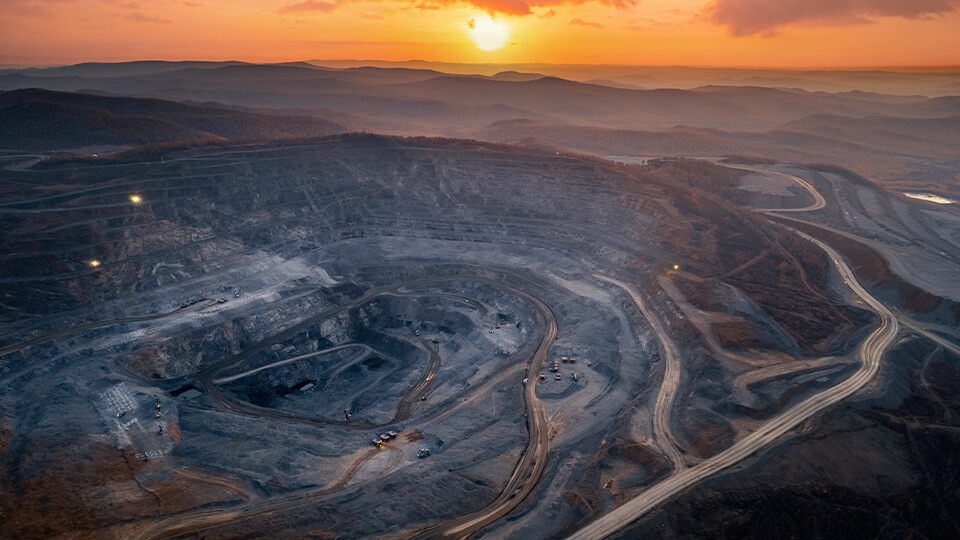As global tensions build, mining executives are rethinking risk, capital and leadership to stay ahead in a fractured world.
The mining industry is navigating an era of unprecedented geopolitical complexity. Cyclical commodity swings are colliding with long-term structural forces such as decarbonization, protectionism, and resource nationalism. At the same time, raising capital requires stronger risk discipline and clearer strategies to win the confidence of investors and stakeholders.
To better understand how the industry is responding, we spoke with leaders across the mining sector to gather insights on how they interpret risk and reward, reshape capital strategies, and prepare leadership teams to operate in a more fragmented global environment.
Cyclical or Structural? Decoding the Forces Shaping Mining’s Future
Mining has always been shaped by cyclical commodity swings, but separating short-term volatility from deeper geopolitical shifts is essential. Commodity cycles tend to be short-term changes, running for one to two years. As a result, the best defense is to build resilience in operations and position at the lower end of the cost curve.
In contrast, structural forces such as trade realignments, decarbonization, and resource nationalism unfold over decades and require different strategic responses.
Distinguishing between short-term commodity cycles and larger structural shifts demands discipline in decision-making, rigorous feasibility processes, and an awareness of how local cultural and regulatory contexts shape long-term outcomes.
Increasingly, leadership is also prioritizing cultural intelligence as a strategic asset, recognizing that understanding local norms, sensitivities, and community expectations is critical to identifying which changes are cyclical and which represent deeper, structural shifts.
Mapping Risk: How Miners Are Quantifying Geopolitical Uncertainty
Geopolitical risk assessment is shifting from reactive judgments to more structured, forward-looking approaches. Traditional reliance on instinct or short-term forecasting is making way for long-term scenario planning and data-driven modelling. Many organizations are developing supply and demand outlooks that help filter out short-term noise and focus on commodities with durable growth trajectories. Others apply structured scenarios which focus on areas such as globalization, protectionism, scarcity, or green futures to track signposts that indicate which path the world is taking.
Alongside these strategic models, risk mapping tools that integrate political stability indexes, ESG benchmarks, and capital flow analytics are becoming more common, allowing companies to compare risks and opportunities across regions. At the same time, the industry is seeing a rise in joint ventures and local partnerships being used to mitigate geopolitical exposure, build trust with stakeholders, and access regional expertise. Together, these approaches reflect a growing recognition that risk and reward in mining must be quantified, monitored, and embedded into portfolio decisions.
Leadership Under Pressure: Solving Complex, Cross-Border Challenges
Leadership in mining is evolving to handle problems that cut across traditional boundaries. Companies are placing greater emphasis on building teams with diverse perspectives and cultural awareness, ensuring that decision-making reflects not only technical and operational expertise, but also social and regulatory realities.
Clear accountability is becoming a hallmark of effective governance, with leaders encouraged to take ownership of outcomes rather than relying on slow committee-driven processes.
Leadership development programs are also focusing on exposing executives to ESG, community engagement, and global market dynamics so that they can integrate these factors into their strategies. Cultural intelligence is also emerging as a critical capability, particularly in regions where success depends on understanding diverse perspectives and building trust with stakeholders. This combination of diversity, accountability, and broader contextual awareness is equipping leadership teams to approach complex enterprise-level challenges with greater agility and coherence.
Capital Meets Geopolitics: Aligning Investment with Global Shifts
Capital allocation in mining is no longer defined purely by financial returns. It has become a geopolitical statement, reflecting how companies signal their commitment to governments, communities, and investors. To navigate this complexity, many organizations are deliberately slowing the execution of major projects, creating space for deeper risk assessments and stronger alignment with long-term geopolitical realities.
Investment choices often continue to favor jurisdictions that are considered stable, yet leaders increasingly recognize that stability itself is being redefined. Shifts in labor laws, tariffs, and environmental regulation are reshaping markets once considered predictable. In response, flexible capital allocation frameworks are emerging as best practice. By regularly updating decisions against geopolitical indicators, firms are able to pivot when trade alliances shift, ESG requirements evolve, or policy landscapes change.
This approach strengthens resilience and helps preserve credibility with capital markets.
Blind Spots and Biases: What Mining Leaders Might Be Missing
Several blind spots continue to shape how the mining industry views risk. For one, the industry risks underestimating the permanence of global fragmentation and focusing too much on short-term political turbulence. Betting on a return to past norms of globalization overlooks the lasting impacts of current geopolitical changes. Another is the belief that operating only in traditionally “Tier 1” jurisdictions guarantees lower risk, which can cause companies to overlook opportunities in more complex regions that hold critical resources for the energy transition.
A further blind spot lies in treating short-term commodity price spikes, such as the recent highs in gold, as if they signal structural change rather than cyclical volatility. Too much attention is placed on short-term political turbulence, while structural forces such as decarbonization and climate-driven policy responses are often underestimated.
Addressing these blind spots requires leaders to look past familiar narratives, confront uncomfortable risks, and adapt strategies to a future where geopolitical complexity is the norm rather than the exception.
Geopolitical shifts are redrawing the map of opportunity and risk in mining. The industry’s future leaders will be defined not only by their ability to deliver operational excellence but also by their capacity to interpret complex signals, allocate capital with resilience, and build trust across governments, communities, and investors. Those who can separate short-term noise from long-term trends, align capital with geopolitical realities, and adapt to a multipolar, ESG-driven world will shape the next era of mining leadership.
Our Mining and Minerals Practice works with companies across the value chain, from major producers to emerging explorers, to identify and develop leaders who can navigate complex geopolitical, regulatory, and operational challenges. We support clients with executive search, board appointments, and leadership advisory services tailored to the evolving demands of the global mining sector.
________________________________________________________
Get in touch. Follow the links below to discover more, or contact our dedicated Mining leadership experts from your local Odgers office here.

Never miss an issue.
Subscribe to our global magazine to hear our latest insights, opinions, and featured articles.
Follow us
Join us on our social media channels and see how we’re addressing today’s biggest issues.



